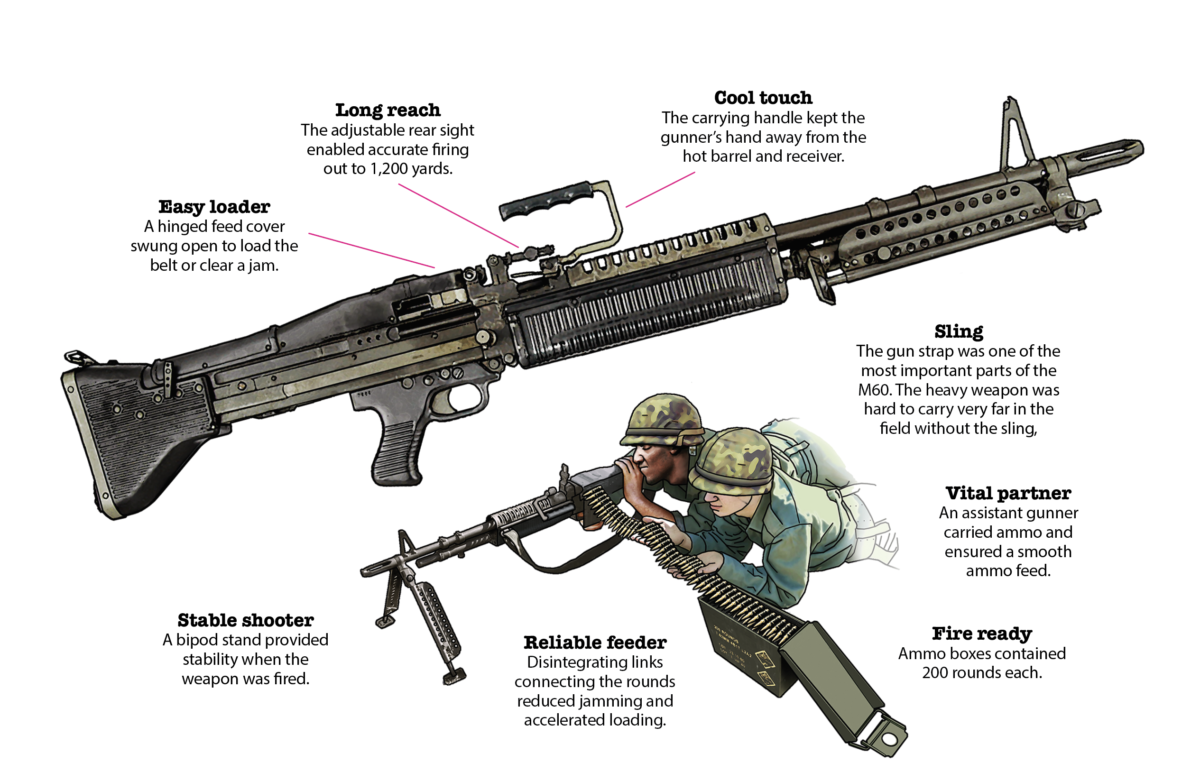During the late morning hours of July 1, 1970, five 82 mm mortar rounds struck Fire Support Base Ripcord in northern South Vietnam. Small-arms fire and rocket-propelled grenades followed. Defending the base’s perimeter, Delta Company, 2nd Battalion, 506th Airborne Regiment, 101st Airborne Division, engaged North Vietnamese Army troops about 700 yards away.
Thus began the 23-day battle for Ripcord, one of the last major battles between the U.S. and North Vietnamese armies, which ended when American forces were ordered to evacuate. The fighting sometimes pitted individual American companies against two NVA battalions. The American platoons’ M60 machine guns played a decisive role in those fights.
The M60, introduced in 1957, incorporated features of the German MG-42 machine gun and FG-42 assault rifle. It fired over an open bolt, used a disintegrating link belt feed and had a quick-change barrel. The M60 was lighter than the M1919A4 and A6 Browning machine guns it replaced, but early models could be unreliable in Vietnam’s harsh conditions.
The barrel change lever tended to catch onto foliage and soldiers’ belts, releasing the barrel without warning. A push-bottom mechanism replaced it, starting in 1966. A fragile component in the trigger mechanism often caused the gun to “run away” when firing. Dirt tended to collect in the gas cylinder, cutting the rate of fire. The gun was also poorly balanced and difficult to carry.
Nonetheless, the M60 quickly became one of the war’s iconic weapons. In addition to troop field expedients, many other modifications and improvements were made as the war progressed. Five variants served in Vietnam, equipping virtually every vehicle, armored personnel carrier, tank, helicopter and Navy patrol craft. Widely exported and upgraded since the Vietnam War, it saw combat action well into the 21st century.
This article appeared in the April 2022 issue of Vietnam magazine.
GET HISTORY’S GREATEST TALES—RIGHT IN YOUR INBOX
Subscribe to our HistoryNet Now! newsletter for the best of the past, delivered every Monday and Thursday.






